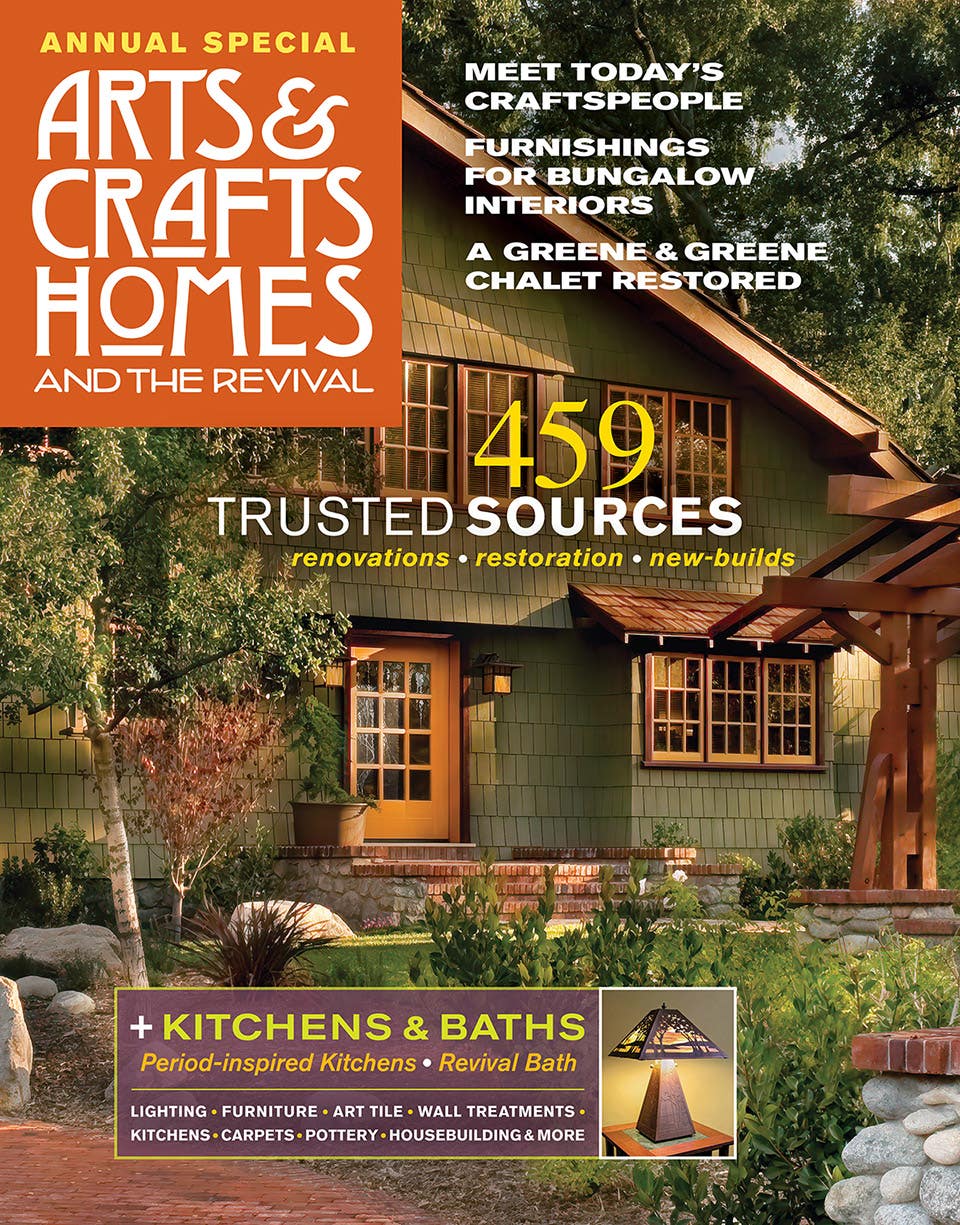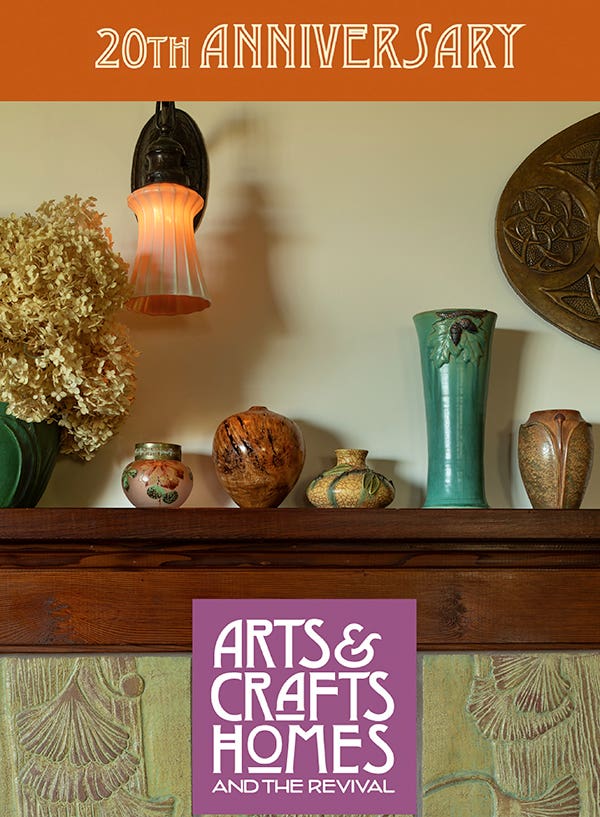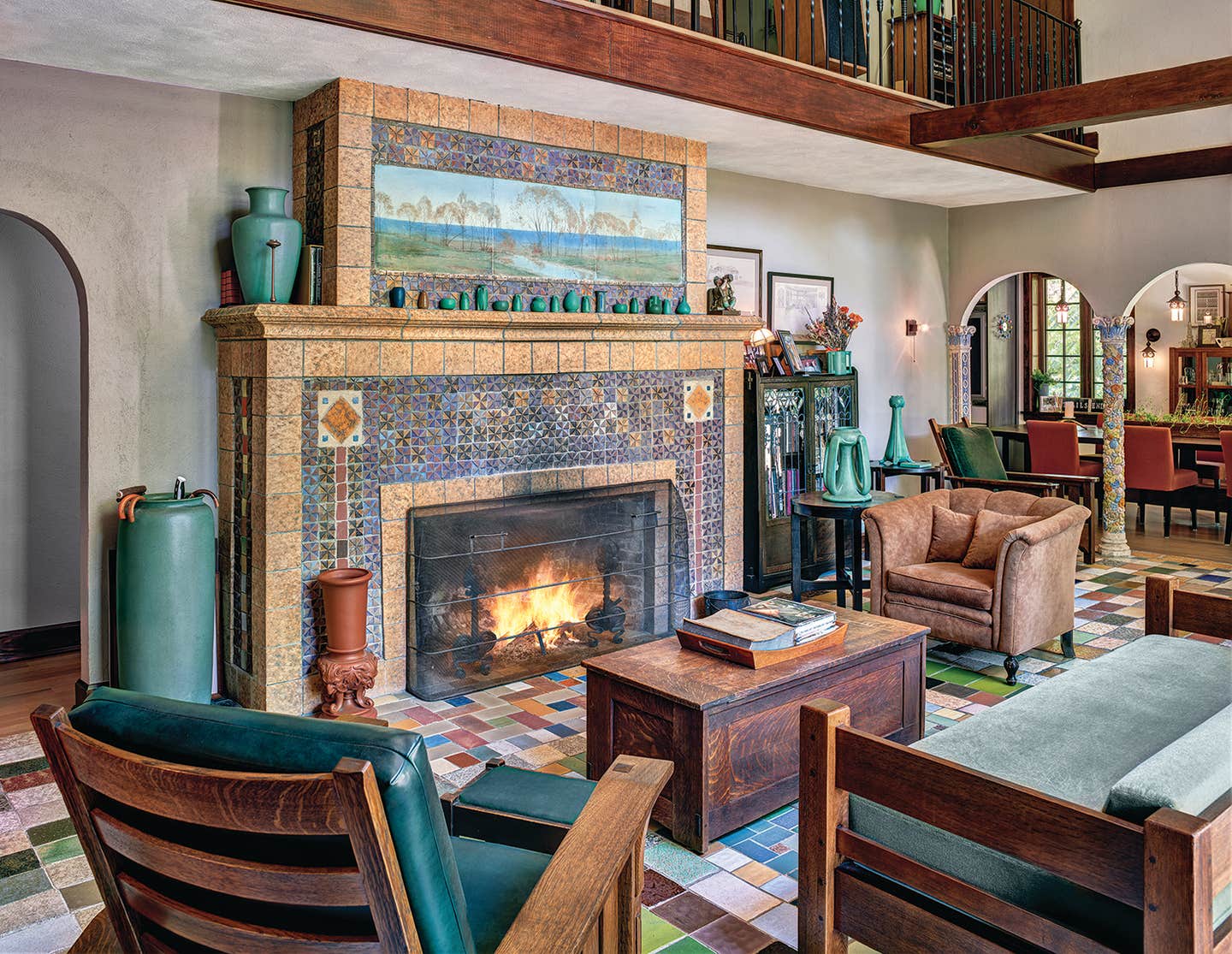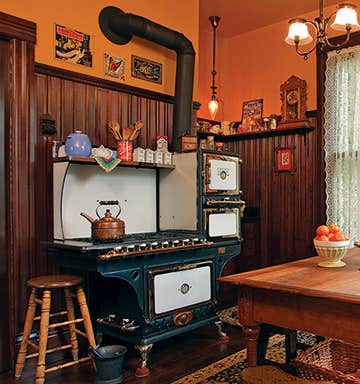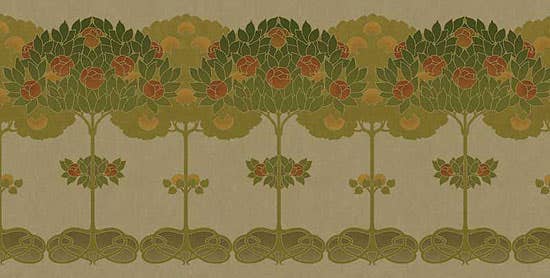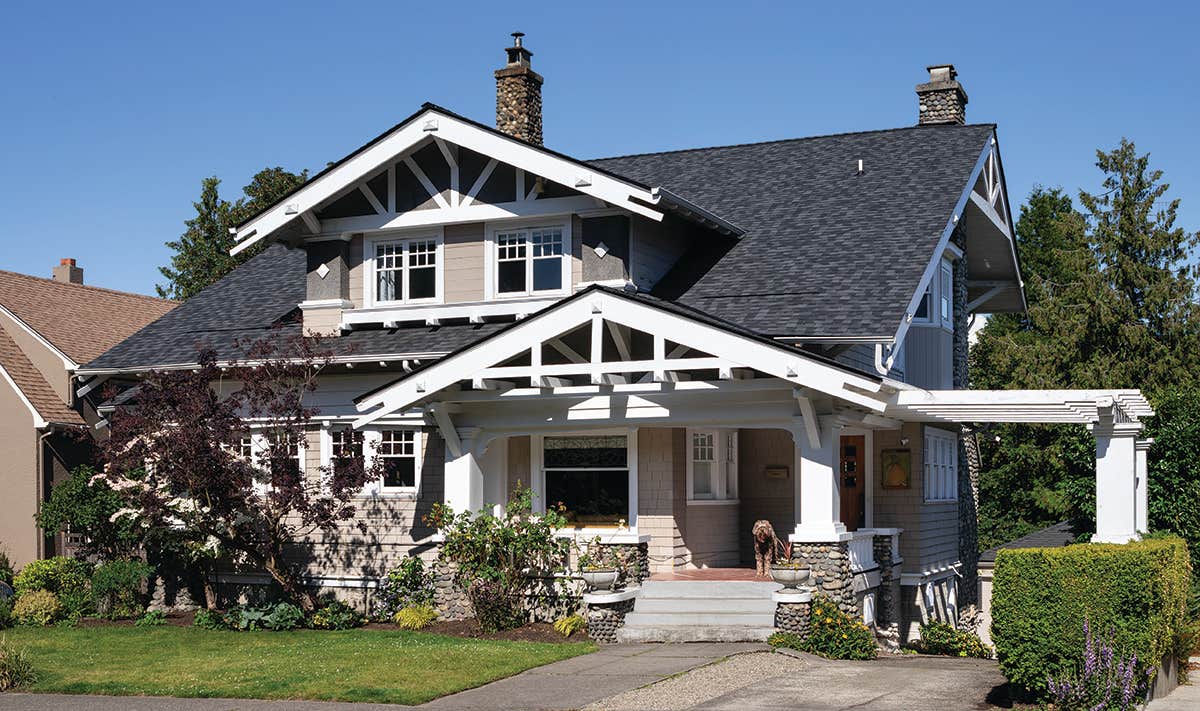Carpets and Rugs for Arts & Crafts Style Homes
Don’t get hung-up on a familiar handful of hand-knotted designs by Morris and Stickley. You have many choices, including hand-tufted, flat-weave, Caucasian, and Mexican rugs. In fact, few things will give you as much pleasure as choosing carpets for your home.
Many designers insist that a well-thought-out room starts with the carpet. The carpet sets the mood, formal or casual; its colors and design provide the foundation for the rest of the room’s décor . . . not to mention that it’s much easier to match (or complement) the color of paint on a wall to the carpet than vice versa.

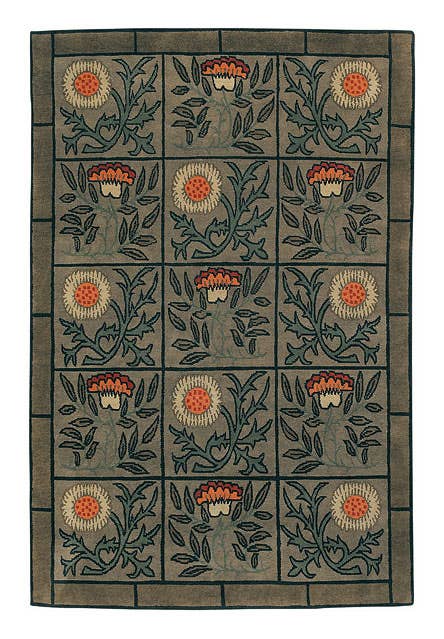
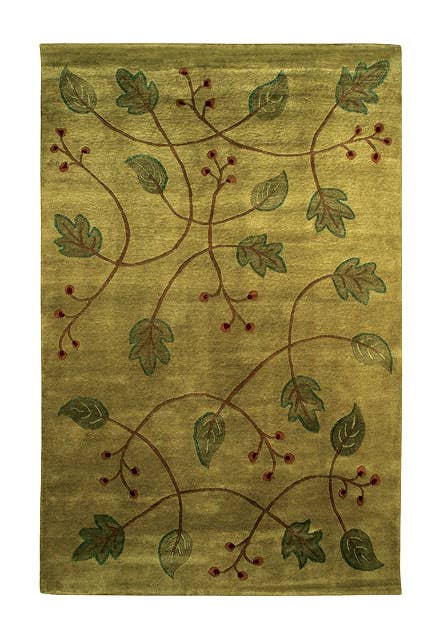
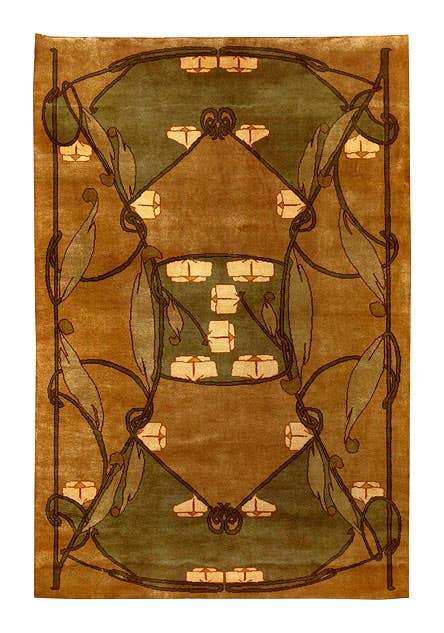
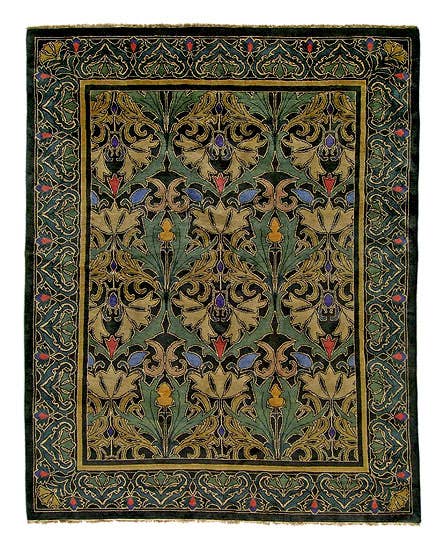
Bungalows and other houses of the era usually have finished wood floors, sometimes accented with parquet borders in Greek key or other patterns. Such hardwood floors were meant to be displayed; also, polished and waxed surfaces were considered hygienic (as compared to large rugs or tacked-down carpeting) during this period. Thus area rugs were favored, with choices that included traditional oriental and Turkish designs imported from the Near and Far East, Turkey, India, and China, along with hand-woven Hammersmiths from William Morris’s company in England—which were retailed in the U.S. by such high-end department stores as Marshall Field’s in Chicago and Wannamaker’s in Philadelphia.
Donegal carpets in “soft shades of terra cotta red, blue, green, and golden brown,” bright and bold, were woven in Ireland’s County Donegal beginning in the 1890s; soon their handsome Arts & Crafts designs by Archibald Knox, C.F.A. Voysey, and others found their way into stylish interiors in New York as well as Dublin and London.
Many homeowners bought rugs from abroad—even Gustav Stickley sold imports from Turkey and China. But more traditional American, machine-made carpets were also popular, the familiar Wiltons, Axminsters, Brussels carpets, and ingrains. Often quite simple in design, a solid field with a patterned border, these were frequently used in several contiguous rooms to tie spaces together. Border patterns were often based on nature: pine trees and acorns, thistles, ginkgo leaves.
So not all carpets were elaborate, or expensive. Simple grass mats from China or Japan were advised in The Craftsman and other magazines as appropriate complements for the natural woodwork and “honesty” of the Arts & Crafts home. Rag rugs also gained favor, advocated by early social reformers such as Candace Wheeler as an acceptable home industry for women to increase their incomes and independence.
The strong, geometric designs in American Indian blankets and rugs enhanced the straight angular lines of his furniture, Stickley suggested. Thus many Craftsman homes of the period proudly hung a Navajo blanket on the wall above a leather-covered settle, or placed a geometrically patterned Native American runner beneath the Morris chair in the fireplace inglenook.
A hand-knotted carpet is an expensive investment. Caucasian rugs are a lower-cost alternative to an expensive antique for today’s A&C interior. (Caucasian rugs average $60 per square foot, while an antique oriental or Morris carpet is several times that amount.) The soft variations in hue and color complement oak and the mellow tones of Craftsman furnishings. Or consider a Zapotec rug from the Oaxaca Valley in southern Mexico, notably available from HL Ranch in Monrovia, California. Made with natural dyes (such as cochineal red, derived from insects in the prickly pear cactus), these rugs have strong geometric patterns that Stickley would have endorsed.
Brian D. Coleman, M.D., is the West Coast editor for Arts & Crafts Homes and Old House Journal magazines, our foremost scout and stylist, and has authored over 20 books on home design.

